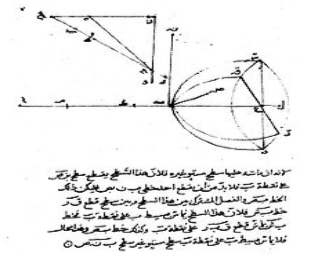
|
Welcome to the Advanced Electromagnetics Research Laboratory (AER Lab) |
|
Energy Harvesting using Electromagnetic Fields The most abundant form of energy available to humans is indeed electromagnetic waves energy in the form of solar rays. In this research thrust, we are developing electromagnetic harvesting skin that is significantly less expensive than solar panels. The skin developed is intended to harvest infrared and visible spectra energy. The infrared energy is particular of high interest since it is available 24/7 unlike visible spectra energy which depends on time of day. We are also developing energy harvesting skin and arrays for harvesting microwaves energy from directed or ambient sources.
|
|
Electromagnetics Simulation of Graphene Graphene is extremely thin physically and also extremely thin electrically. Meaning that the thickness of a graphene layer is orders of magnitude smaller than wavelengths at and beyond the visible spectra. This feature makes modeling graphene distinctly challenging. We are developing numerical algorithms that can allow very expeditious modeling of graphene layers while including the dispersive behavior. |
|
|
|
Antennas Practically everything that can hold accelerating charges can radiate. To design effective radiators for communication purposes, however, one needs induce accelerating charges having specific information content, and to ensure efficient radiation in a special direction and special polarization. Throughout the past 100 years, antennas evolved from the simple dipoles and loops to highly complex structures with intricate feeding circuitry. Some well-known antennas were designed with the help of empirical findings. Examples of such antennas include the Yagi-Uda antenna. Other antennas were designed based on circuit resonance principles such as the microstrip and cavity-backed antennas. Yet, other types of antennas, such as the dielectric resonator antenna, were designed based on modal excitation without providing physical insight into their radiation mechanism. In fact, why certain antennas radiate was not clear when they were first used.
In our research, we introduced the concept of elementary radiators as building blocks for planar antennas. Our idea here is to use an ensemble of elementary radiators to form what can be most appropriately referred to as a metasurface. The elementary radiators will be electrically very small and thus suitably referred to as Huygens’ elements. While each radiator if present in isolation will lead to insignificant radiation, the elementary radiators, in unison, alter the impedance of each radiator to enable efficient power transfer to each element. From a circuit matching perspective, the close proximity serves as impedance transformation thus enabling increased surface current which leads to enhanced radiation.
|
|
Electromagnetic Compatibility and Interference |
|
Flat Lenses and Refraction from Inhomogeneous electrically-thin media Which came first, the law of refraction or lenses remain an intriguing question. How can a lens be invented or created without understanding refraction? Someone some centuries ago could have noticed that humans have lenses in their eyes to focus light but without understanding the geometry and mathematics that makes such focusing possible. Regardless, it is safe to surmise that someone must have first realized the connection between the two.
The law of refraction is attributed to Snell, but historical records show that it was Ibn Sahl of Bagdad who first provided a theoretical framework for refraction of rays, later to be canonized as Snell law. Snell law is indeed the foundation for optical phenomenon.
While humans and animals evolved to have spherically-contoured shapes to enable light transfer and hence vision, not all living things have the same, which preclude the rush to judgement that nature did not favor non-spherical geometry for light concentration and sensing. Suffice it to look at insects to understand this point. However, in this age, inexpensive manufacturing, while limited in many respects, have affected technological and scientific development. Everything now has to be “printed”. Either 2-d or 3-d, everything has to be printed, period!
Lenses, which have been historically spherically contoured, have escaped the menace (or blessing) of “printing” for years. Modern digital or non-digital cameras still rely on lenses that are spherically contoured. Can this centuries-old paradigm be altered. In recent years, several groups have been very active in developing flat lenses for optical regime. In our group, we developed flat lenses, presently for the microwaves regime, that can provide high concentration of electromagnetic waves with sufficiently less aberration that traditional gradient index lenses. Our work hinges on making the lens electrically thin, much less than the wavelength. This in turn lead to additional discoveries including the development of a new law of refraction for electrically-thin inhomogeneous media. We invite you to view some of our recent publications.
|
|
Crack Detection and Material Characterization using Electrically-Small Open Resonators Open resonators such as Split Ring Resonators or their derivatives can produce strong evanescent fields. Such fields are highly sensitive to the composition of electric and magnetic energy in the close proximity of the resonators. This sensitivity provides the resonators with the ability to detect minute changes either in material composition or in surface features. This property makes these types of resonators highly suitable to be employed as sensors for a variety of applications. Our research demonstrated the ability to detect minute material composition changes and sub-millimeter cracks in metallic surface. This was accomplished at a fraction of the cost that wave-guide based methods would require. |
|
MIM Diodes |
|
Detection of Biological Anomalies using Intelligent Microwave Modalities Microwaves are perfectly suited for investigating the composition of the human body and tissues. This is primarily because they are benign in the sense that the energy they carry is relatively low and so far had not been proven to present any health hazards to human tissues (in the form of ionization or excessive power deposition). We are investigating different techniques for two distinct objectives. The first is detection of anomalies within the human body, and the second for imaging human organs and tissues. Our research encompasses probes design and intelligent software based on neural networks and artificial intelligence to discern specific tissue features. |
